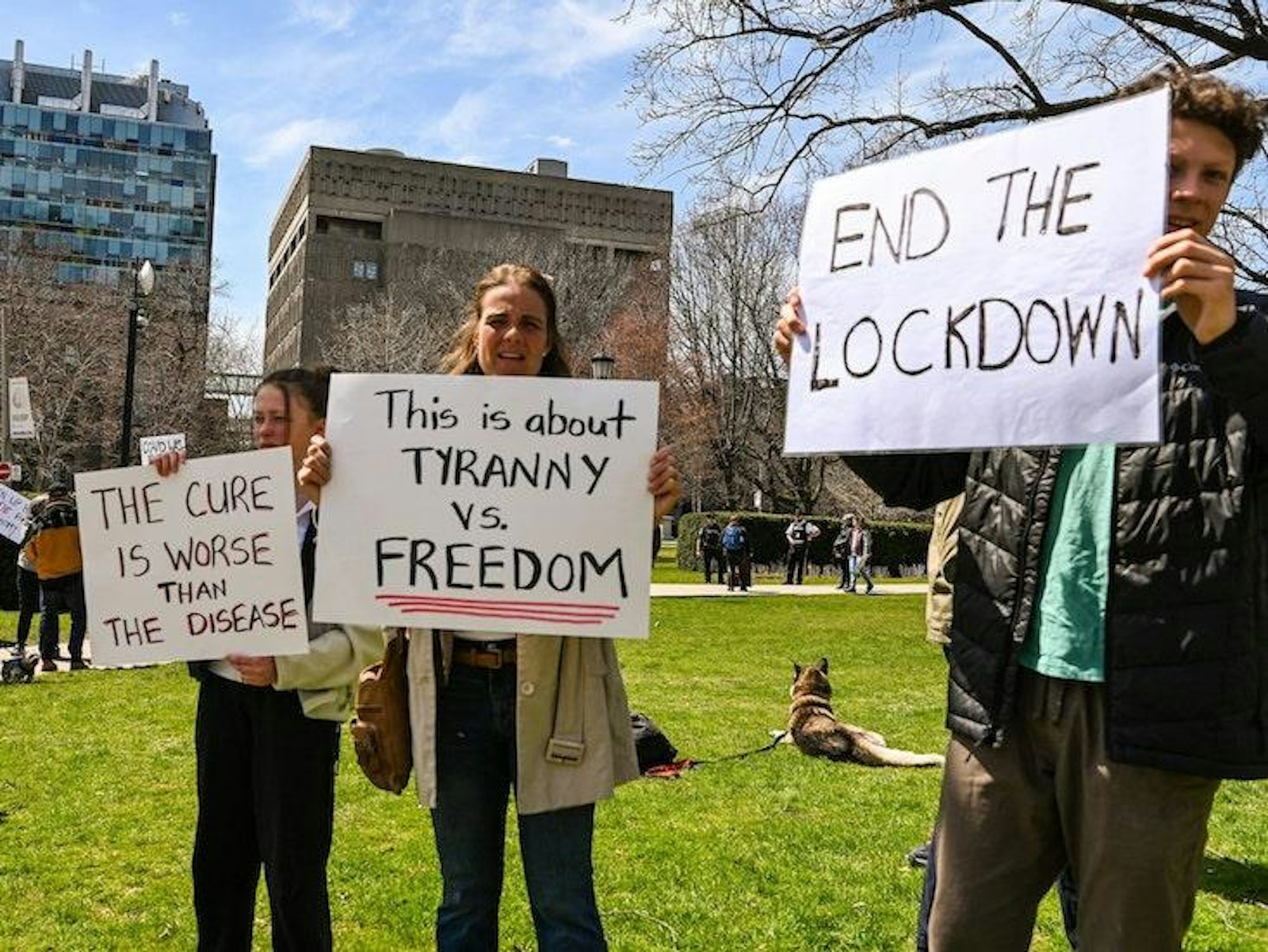
When I worked as a TV reporter covering health and science, I would often be recognized in public places. For the most part, the interactions were brief hellos or compliments. Two periods of time stand out when significant numbers of those who approached me were seeking detailed information: the earliest days of the pandemic that became HIV/AIDS and during the anthrax attacks shortly following 9/11. Clearly people feared for their own safety and felt their usual sources of information were not offering them satisfaction. Citizens’ motivation to seek advice when they feel they aren’t getting it from official sources is a strong indication that risk communication is doing a substandard job. It’s significant that one occurred in the pre-Internet era and one after. We can’t blame a public feeling misinformed solely on the noise of the digital age.
America is now opening up from COVID-19 lockdown with different rules in different places. In many parts of the country, people have been demonstrating, even rioting, for restrictions to be lifted sooner. Others are terrified of loosening the restrictions because they see COVID-19 cases and deaths still rising daily. The officials deciding what to open, and when, seldom offer thoughtful rationales. Clearly, risk communication about COVID-19 is failing with potentially dire consequences.
A big part of maintaining credibility is to admit to uncertainty—something politicians are loath to do.
Peter Sandman is a foremost expert on risk communication. A former professor at Rutgers University, he was a top consultant with the Centers for Disease Control in designing crisis and emergency risk-communication, a field of study that combines public health with psychology. Sandman is known for the formula Risk = Hazard + Outrage. His goal is to create better communication about risk, allowing people to assess hazards and not get caught up in outrage at politicians, public health officials, or the media. Today, Sandman is a risk consultant, teamed with his wife, Jody Lanard, a pediatrician and psychiatrist. Lanard wrote the first draft of the World Health Organization’s Outbreak Communications Guidelines. “Jody and Peter are seen as the umpires to judge the gold standard of risk communications,” said Michael Osterholm of the Center for Infectious Disease Research and Policy at the University of Minnesota. Sandman and Lanard have posted a guide for effective COVID-19 communication on the center’s website.
I reached out to Sandman to expand on their advice. We communicated through email.
Sandman began by saying he understood the protests around the country about the lockdown. “It’s very hard to warn people to abide by social-distancing measures when they’re so outraged that they want to kill somebody and trust absolutely nothing people say,” he told me. “COVID-19 outrage taps into preexisting grievances and ideologies. It’s not just about COVID-19 policies. It’s about freedom, equality, too much or too little government. It’s about the arrogance of egghead experts, left versus right, globalism versus nationalism versus federalism. And it’s endlessly, pointlessly about Donald Trump.”
Since the crisis began, Sandman has isolated three categories of grievance. He spelled them out for me, assuming the voices of the outraged:
• “In parts of the country, the response to COVID-19 was delayed and weak; officials unwisely prioritized ‘allaying panic’ instead of allaying the spread of the virus; lockdown then became necessary, not because it was inevitable but because our leaders had screwed up; and now we’re very worried about coming out of lockdown prematurely or chaotically, mishandling the next phase of the pandemic as badly as we handled the first phase.”
• “In parts of the country, the response to COVID-19 was excessive—as if the big cities on the two coasts were the whole country and flyover America didn’t need or didn’t deserve a separate set of policies. There are countless rural counties with zero confirmed cases. Much of the U.S. public-health profession assumes and even asserts without building an evidence-based case that these places, too, needed to be locked down and now need to reopen carefully, cautiously, slowly, and not until they have lots of testing and contact-tracing capacity. How dare they destroy our economy (too) just because of their mishandled outbreak!”
• “Once again the powers-that-be have done more to protect other people’s health than to protect my health. And once again the powers-that-be have done more to protect other people’s economic welfare than to protect my economic welfare!” (These claims can be made with considerable truth by healthcare workers; essential workers in low-income, high-touch occupations; residents of nursing homes; African-Americans; renters who risk eviction; the retired whose savings are threatened; and others.)
In their article for the Center for Infectious Disease Research and Policy, Sandman and Lanard point out that coping with a pandemic requires a thorough plan of communication. This is particularly important as the crisis is likely to enter a second wave of infection, when it could be more devastating. The plan starts with six core principles: 1) Don’t over-reassure, 2) Proclaim uncertainty, 3) Validate emotions—your audience’s and your own, 4) Give people things to do, 5) Admit and apologize for errors, and 6) Share dilemmas. To achieve the first three core principles, officials must immediately share what they know, even if the information may be incomplete. If officials share good news, they must be careful not to make it too hopeful. Over-reassurance is one of the biggest dangers in crisis communication. Sandman and Lanard suggest officials say things like, “Even though the number of new confirmed cases went down yesterday, I don’t want to put too much faith in one day’s good news.”
Sandman and Lanard say a big part of maintaining credibility is to admit to uncertainty—something politicians are loath to do. They caution against invoking “science” as a sole reason for action, as science in the midst of a crisis is “incremental, fallible, and still in its infancy.” Expressing empathy, provided it’s genuine, is important, Sandman and Lanard say. It makes the bearer more human and believable. A major tool of empathy is to acknowledge the public’s fear as well as your own. There is good reason to be terrified about this virus and its consequences on society. It’s not something to hide.
Sandman and Lanard say current grievances with politicians, health officials, and the media, about how the crisis has been portrayed, have indeed been contradictory. But that makes them no less valid. Denying the contradictions only amplifies divisions in the public and accelerates the outrage, possibly beyond control. They strongly emphasize one piece of advice. “Before we can share the dilemma of how best to manage any loosening of the lockdown, we must decisively—and apologetically—disabuse the public of the myth that, barring a miracle, the COVID-19 pandemic can possibly be nearing its end in the next few months.”
Robert Bazell is an adjunct professor of molecular, cellular, and developmental biology at Yale. For 38 years, he was chief science correspondent for NBC News.






























